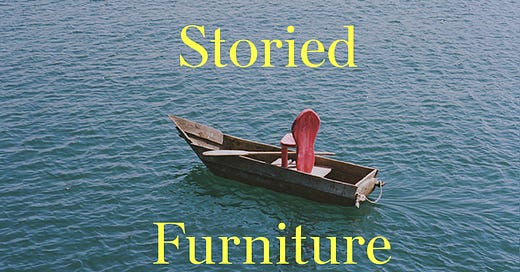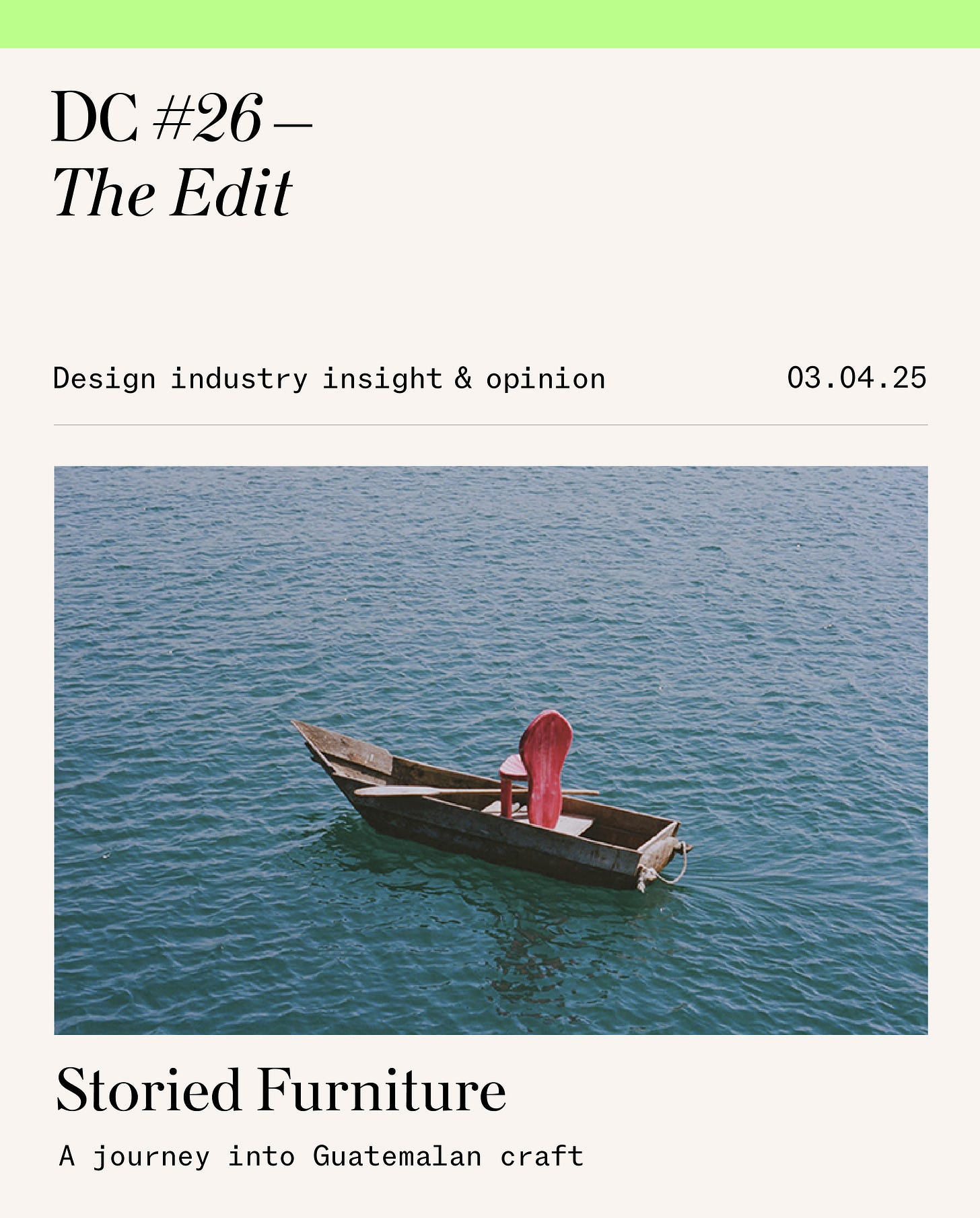Design Considered #26 - The Edit
Milan must-sees, RImowa goes retro and the ultimate home-office chair.
#01 - Opening Thought
When it comes to celebrating craft in design, it’s the hand of the maker, the context, and the journey that give the work depth. Telling the story behind an object — properly — is tough, so we should commend Viaje a Los Amuletos, a new book from Agnes Studio and Beth Wilkinson Studio (the force behind Lindsay magazine) documents a trip across Guatemala to uncover the process and people behind Agnes Studio’s Amuletos project. The book, which reveals the richness of Guatemala’s resources - from marble from Guatemarmol to textiles inspired by the woven ponchos of Momostenango - is a design travelogue: part object study, part creative gesture. Photography by Andrés Altamirano captures both place and process with warmth, while words from Maya K’iche’-Kaqchikel poet Rosa Chávez deepen the connection between craft and culture.
April launch details:
New York: Friday 4 April, 6—9pm, Maryam Nassir Zadeh
#02 - For Your Consideration
1. WHAT TO BUY
Rimowa has dipped into its archive and pulled out something rather wonderful for the summer: a reissue of its 1988 Holiday Hand-Carry Case. Impractical? Sure — although the addition of a sturdy shoulder strap helps. But these glossy, primary-coloured pieces are less about logistics and more about celebrating the nostalgia of good old fashioned holiday-making.
There’s something charming about a big brand embracing heritage like this, especially as the season of travel approaches (it’s also a smart publicity move, even if these don’t sell). Billed - back in the day - as a suitcase for young people, the playful, wheel-less case now feels just as suited to sitting proudly in your hallway or bedroom as it does accompanying you on a weekend away. It’s the kind of object that makes you want to book a train, pack light, and chase some sun no matter the time of year.
2. WHAT TO READ
After hearing good things (and struggling to track a copy down in London), I optimistically paid €30.00 to Le Monde for its recently relaunched M International magazine, imagining I might receive it at some point before the summer (magazine distribution is not what it used to be). A few days later, I heard a thud at my doorstep and a new favourite magazine arrived in beautiful, branded, brown paper packaging. Luxuriously produced and magnificently art-directed, the French title’s offering in English means the perfectly on-point still life shoots, ambitious photojournalism (lots of good architecture), and witty writing can be enjoyed more broadly in the anglophone world.
3. WHAT TO SEE
Previews and events at Milan Design Week begin as early as Saturday and will roll on across what looks to be a sunny, busy week. Selecting what’s worth seeing across a sprawling showcase spanning the city and out-of-town Rho Fairgrounds is never easy. For some help I’d point you toward Monocle’s lovingly crafted Salone newspaper, which can be found on good newsstands in the city (and further afield). For a digital digest, look at design editor Amy Frearson’s easy-to-use Milan Map, and Camron’s beefy Milan Guide and Invitation Gallery.
I’m waiting to hear what’s worth seeing and making a Milan pitstop mid-week - so keep me posted on prize finds please. However, one definite visit on my list comes from Saint Laurent, honouring the legendary Charlotte Perriand at Padiglione Visconti. The pieces on show include the tiered Table Mille-Feuilles (1963), the elegant Fauteuil Visiteur Indochine (1943), the rosewood Bibliothèque Rio (1962), and the five-seat Banquette de la Résidence de l’Ambassadeur du Japon à Paris (1967). The event is being presented under the curatorial direction of Anthony Vaccarello and offers a glimpse at archival pieces never before shown to the public.
#03 - Design Selection
Working from home shouldn’t mean having to roll a big, ugly—but ergonomically efficient—task chair into our living spaces to make it safely through a day of calls. Mynt from Vitra means we don’t have to. The piece is a sleek new office perch created by French designer Erwan Bouroullec. Available in fine finishes, including oak, with myriad upholstery colourways, it’s an ergonomic chair with the quiet poise of a well-designed domestic object. A sleek profile and pared-back silhouette means it doesn’t dominate the room; it provides a warm, understated presence in the home.
“Work is meant to become more and more collective,” says Bouroullec of the design, “so a chair needs to welcome anyone, any task, any moment.” That’s the principle behind Mynt’s most intriguing feature: a patented, body-responsive mechanism that separates the seat from the backrest. “Instead of having a couple of positions, you’ve got a million. The body is surfing on the chair.” While it looks simple, the chair is incredibly optimised. “Mynt is made of very few parts. Everything can be recycled. Everything is recycled first. Everything can be exchanged, repaired, or replaced,” he says. It’s modular, built for circularity, and designed with care.








